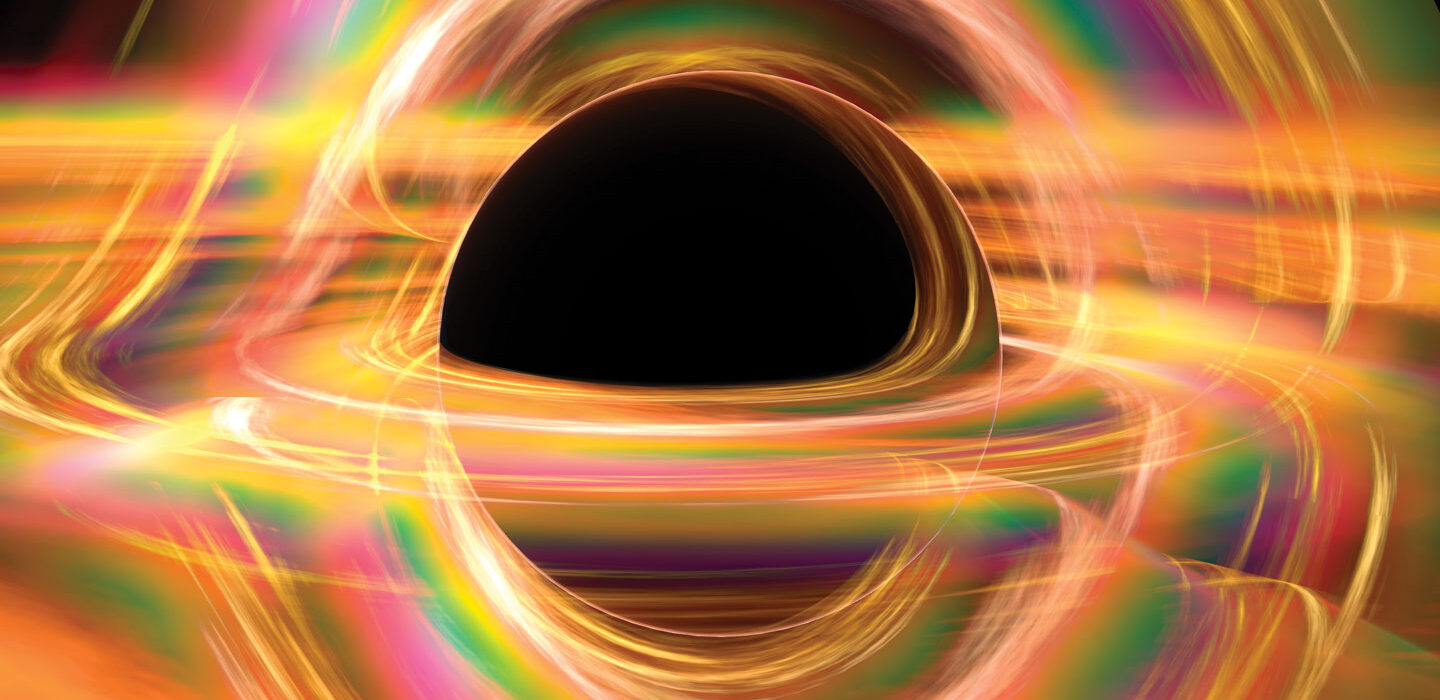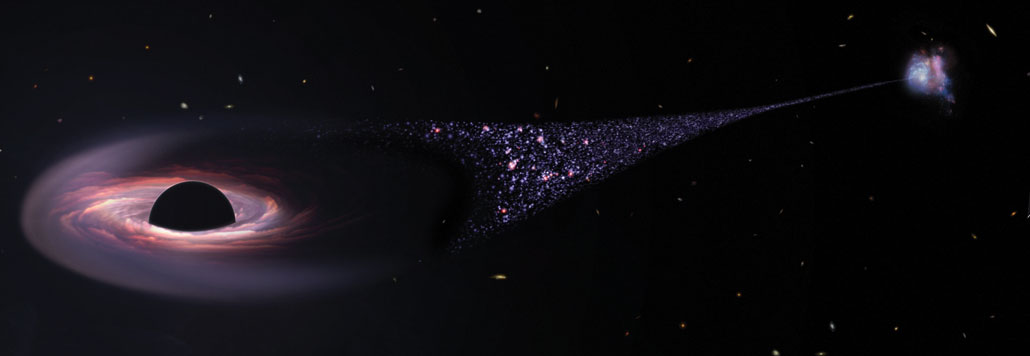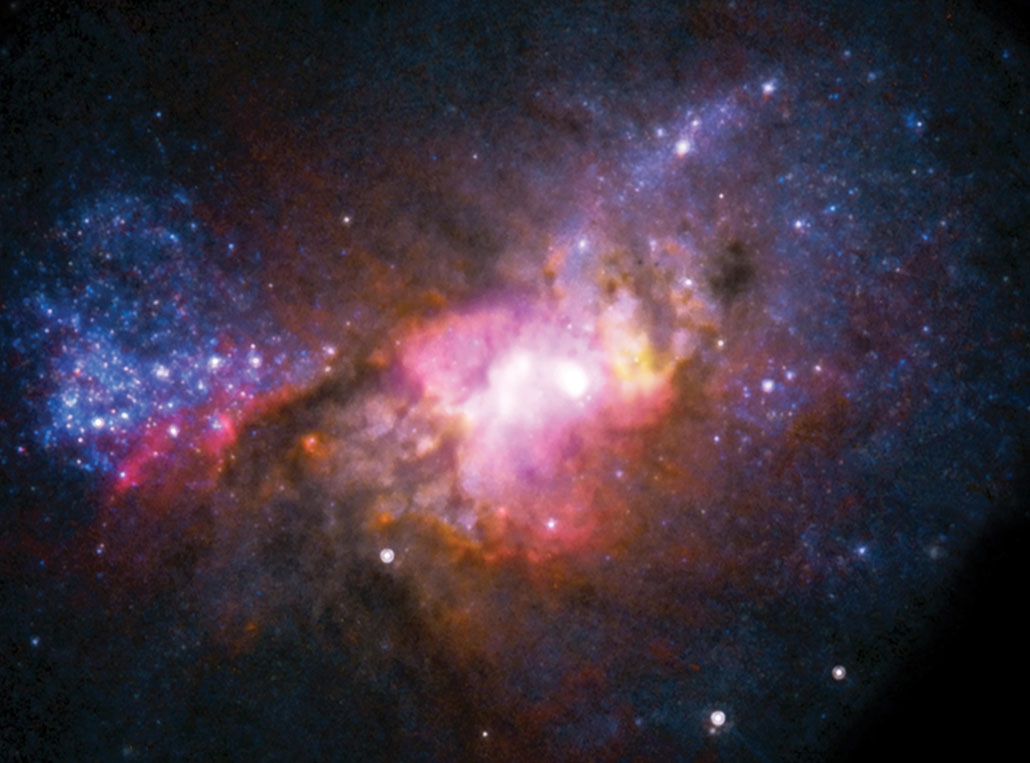Unveiling the Enigmatic Black Holes: Clues to the Universe’s Birth

In a stunning revelation, scientists have discovered that the universe’s tiniest and seemingly insignificant galaxies are harboring some truly extraordinary cosmic entities – massive black holes. These peculiar findings have challenged long-held beliefs about the nature and formation of these enigmatic celestial bodies. It appears that black holes, weighing as much as millions or even billions of suns, are not exclusive to the centers of massive galaxies. Instead, they are making their presence known in unexpected locations, raising profound questions about the infancy and evolution of our universe.
Galactic Gluttons and Misfit Black Holes: Traditionally, astronomers believed that supermassive black holes resided solely at the hearts of large galaxies, where copious amounts of material provided sustenance for their insatiable appetites. However, computer simulations conducted over the past two decades revealed a peculiar anomaly – the existence of massive black holes in unexpected locations. Initially dismissed as flukes, these oddballs have now caught the attention of astrophysicists who recognize them as potential windows into the early stages of the universe.

The Birth of a Wild Idea: Enter Marta Volonteri, an astrophysicist at Institut d’Astrophysique de Paris, who conducted groundbreaking simulations tracking the evolution of black holes. To her surprise, even the smallest galaxies, known as dwarf galaxies, were predicted to house surprisingly large black holes from their inception. This revelation hinted at the possibility that these black holes could be remnants from the universe’s birth, offering invaluable insights into the formation of the very first black holes.
A Serendipitous Discovery: Astronomer Amy Reines stumbled upon the first compelling evidence supporting Volonteri’s theory. While studying a dwarf galaxy called Henize 2-10, Reines detected intense radio and X-ray emissions originating from the center of the galaxy, suggesting the presence of a massive black hole. This finding challenged the conventional wisdom that dwarf galaxies lacked significant black holes or had only small ones. Inspired by these observations, Reines embarked on a mission to search for more massive black holes in dwarf galaxies.
Unveiling the Cosmic Outliers: Reines and her team meticulously analyzed data from the Sloan Digital Sky Survey, scrutinizing approximately 25,000 dwarf galaxies. Astonishingly, they identified 151 dwarf galaxies that potentially housed substantial black holes, providing further support for the idea that these small galaxies could be home to extraordinary celestial entities. These newfound black holes could hold the key to understanding the formation of the universe’s largest and most enigmatic structures.
A Clue from the Masses: The masses of these dwarf galaxy black holes offer vital clues about the origins of their colossal counterparts. Theoretical models propose two scenarios: either these black holes formed from the collapse of the first stars, resulting in relatively lightweight entities, or they originated from the direct collapse of enormous gas clouds, yielding significantly heavier black holes. By determining the masses of these dwarf galaxy black holes, scientists hope to shed light on the mysterious and rapid growth of black holes in the early universe.

Wandering Black Holes and their Cosmic Significance: Another intriguing revelation emerged from the simulations conducted by Jillian Bellovary, a theoretical astrophysicist at Queensborough Community College. Her work predicted that massive black holes in dwarf galaxies would often be found off-center, wandering aimlessly after failing to settle in their galaxies’ cores. Observations by Reines and others confirmed this prediction, suggesting that these wandering black holes could represent the seeds from which supermassive black holes ultimately formed.
Rogue Black Holes and Cosmic Collisions: Beyond the confines of dwarf galaxies, scientists have also detected signs of rogue black holes, which have been ejected from their host galaxies due to violent interactions, collisions, or gravitational interactions with other massive objects. These cosmic nomads, set adrift in the vast expanse of space, serve as reminders of the dynamic and sometimes turbulent history of galaxies. By studying these rogue black holes, astronomers hope to gain a deeper understanding of galactic dynamics and the intricate interplay between black holes and their cosmic surroundings.
Conclusion: The discovery of massive black holes in dwarf galaxies and the existence of wandering and rogue black holes challenge conventional wisdom about the birth and evolution of these enigmatic cosmic entities. By unraveling the mysteries surrounding these oddball black holes, scientists are forging new paths towards understanding the origins of the universe itself. As our cosmic journey continues, each revelation brings us closer to comprehending the profound secrets hidden within the depths of the cosmos.
Next Post : iFX EXPO’s Legendary Parties



